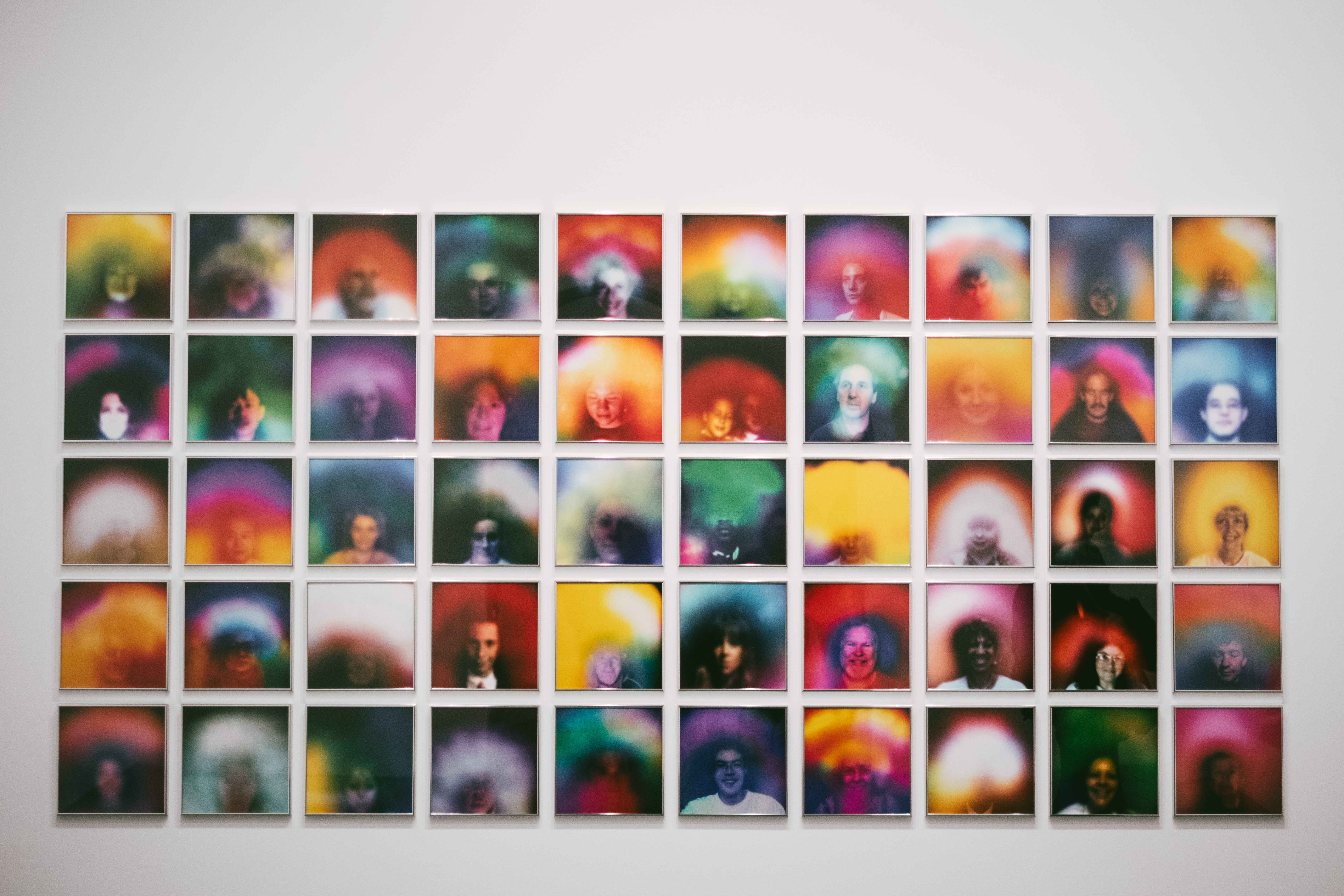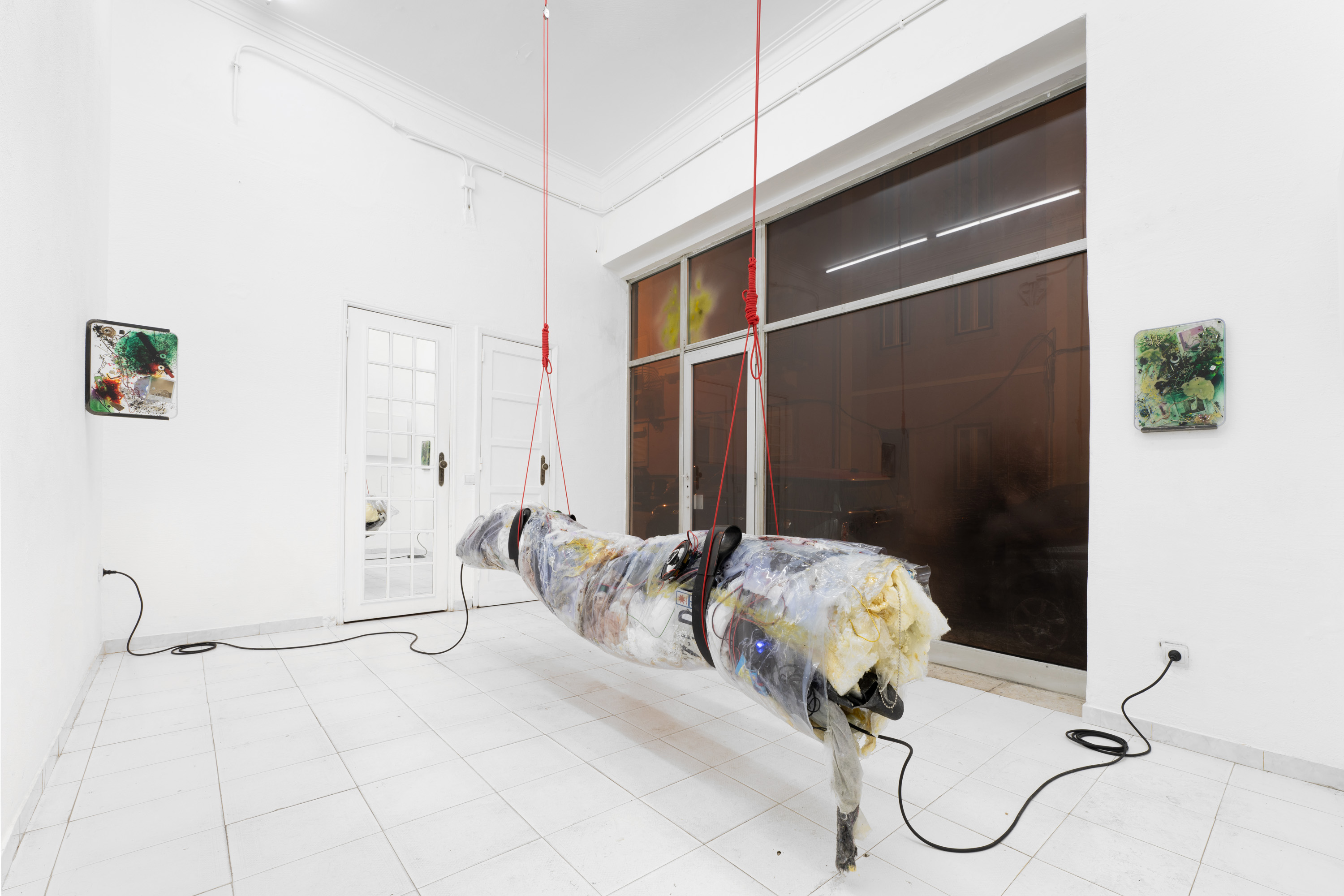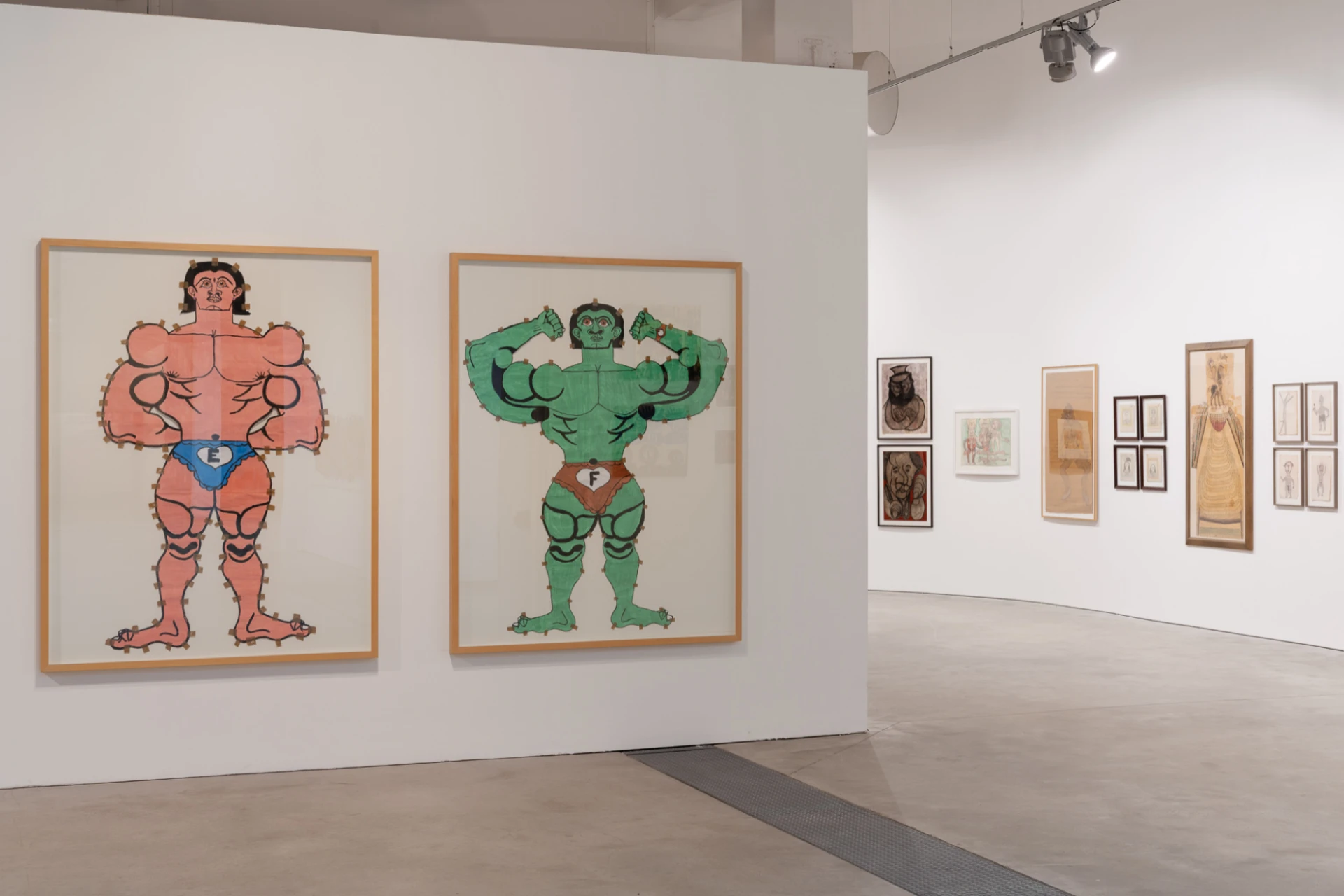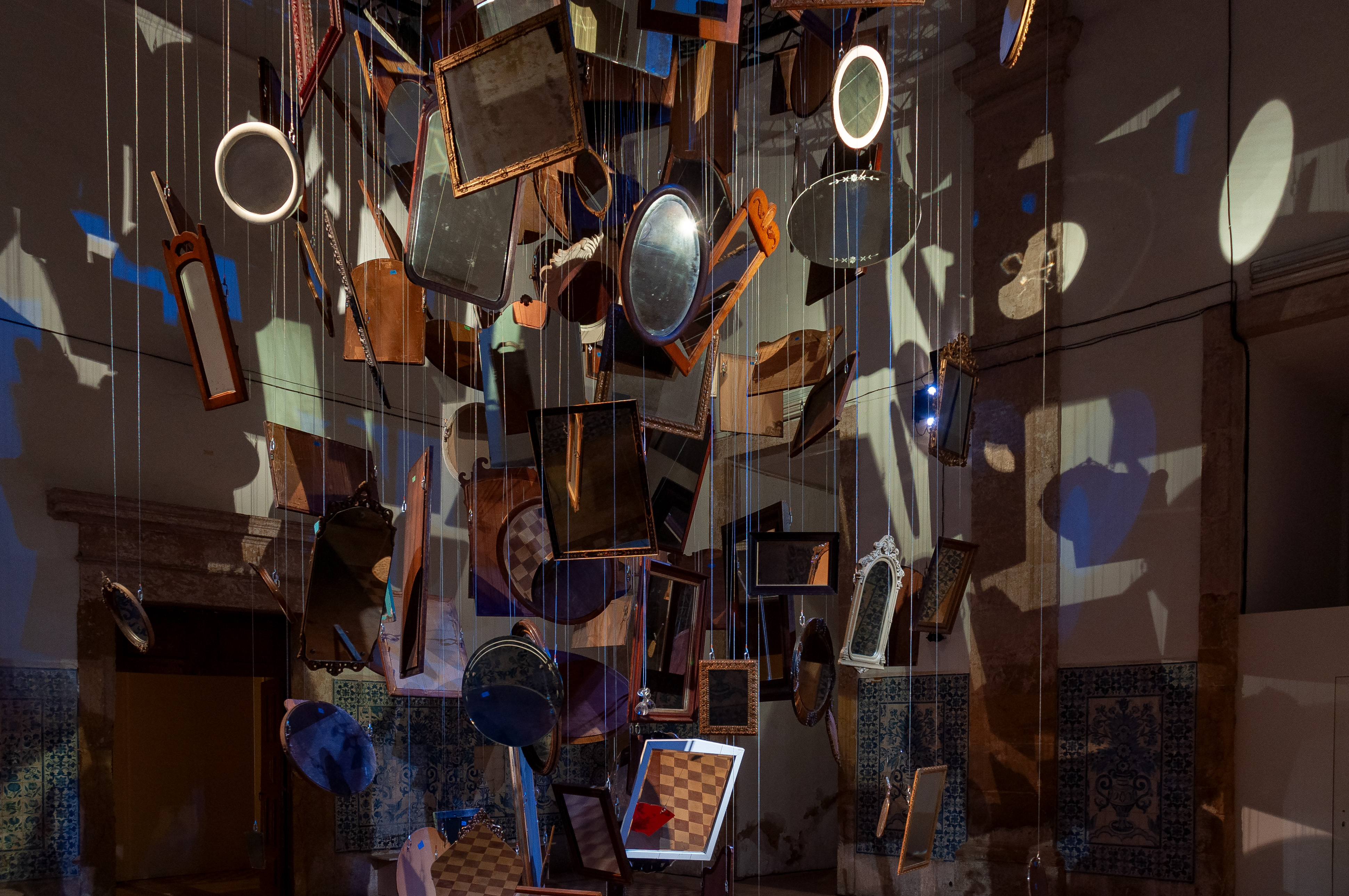article
A Fábrica das Sombras
As part of Anozero’s programme – Bienal de Arte Contemporânea de Coimbra, which in the intervening years organises solo shows by nternationally renowned artists, 'A Fábrica das Sombras' introduces us to the artistic practice of George Bures Miller (1960) and Janet Cardiff (1957), whose works acquire a new reading and dimension in the monastic environment of the 18th century building of Santa Clara-a-Nova, marked by baroque architecture, religious and military sentiment and abandonment.
Approaching art as a place of experimentation, the Canadian duo presents us in Coimbra with a body of work that, exploring issues related to lighting, theatricality, memory and music, incorporates diverse mediums – drawings, poems, sound and multimedia installations, kinetic sculptures – in the creation of sensory experiences filled with emotions.
Throughout the exhibition, we are confronted with the importance of the dialogue that the duo establishes between their work and the architecture of the space, involving the viewer in a game of constant discovery, in a search for connections and correlations. In this regard and based on one of the chapters in the building’s history, we come across the entrance work Curtain (1990-2024), which, strategically positioned, draws on the wall the shadow of an active fire that falls on the wheel of the foundlings. In a darkened room, we observe a black silk curtain, on which four intermittent lights fall and whose shadows of the fire launch us into a game of analogies with the lives that began in that space and the collective distress in the face of the current global condition. On the other side of the long, empty corridor of the Monastery of Santa Clara-a-Nova, the sound of fire and the crackling of flames keep us company as we walk along it, immersing us in an atmosphere of urgency and unease, intensified by the sound of sirens and the looped projection of a burning house. On the threshold between fiction and reality, the emotional and subjective nature of the sound and space provoked by the multisensory video House Burning (2001) evokes in the viewer a feeling of strangeness and instability that we find again in George Bures Miller’s solo installations: Imbalance.1 (Wings), 1994 and Imbalance.6(Jump), 1998. Belonging to the series Simple Experiments in Aerodynamics, both kinetic sculptures play with notions of gravity, (im)balance and the viewer’s perception, in an exploration of the experiential and the illusory, between the static nature of the objects and the motility of the images presented.
Occupying one of the rooms of the Monastery, transcending sound, space and time, the installation The Infinity Machine (2015), composed of more than a hundred mirrors that extend from the ceiling to the floor, imposes itself due to its visual dimension. In the darkness, we observe the sparkling composition of ancient mirrors that, fixed to a rotating structure, orbit in space, projecting infinite reflections to the sound of recordings of the solar system. Accompanied by the sequence of constantly changing lights and the dance of shadows that emerge, the multiple layers that make up The Infinity Machine are revealed between beauty and mystery, in a work that, by transporting us to the immersive dimension of the universe, launches us into a reflection on immigration and identity, memory and space, society and technology.
The intimate escape to other new worlds continues in the space of the former refectory of the Monastery of Santa Clara-a-Nova, as we delve into the immersive and performative experience provided by the sound installation The Forty Part Motet, 2001. Composed of 40 columns, arranged in a circle and around two benches that invite us to sit, we appreciate and listen to the Renaissance choral composition by Thomas Tallis, Spem in Alium. Transformed into a virtual electronic choir, each column reproduces a different voice in an emotional and intimate sound experience that invites the participation of the spectator who, by moving around space and interacting with the work of sound architecture, can create their own composition in an exercise of communion, transcendence and rebirth.
The performative potential of the audience's interaction with the works, in a process of discovery and editing of what is seen and heard, as well as the perception of our body as a tool for artistic experience, are constant throughout the exhibition. In this regard, we highlight The Cabinet of Curiousness (2010), a sound installation consisting of a simple wooden cabinet whose 20 drawers - in a simultaneous game of hiding and revealing - we are invited to open. Between songs and recordings of the couple, speeches by Churchill, or the recording of a World War II soldier singing, taken from the artists’ archives, each drawer emits a distinct audio that can be heard individually or simultaneously, in what the artists refer to as a contrast between the obsolete system of cataloguing individual pieces of information and the current tendency to inundate ourselves with excessive information.
The interest in sound as a catalyst for memories, allowing the viewer to access their own memories and emotions, continues in works such as Janett Cardiff’s To Touch (1993) and The Instrument of Troubled Dreams (2018). In the former, in the centre of a darkened and silent room, an old carpenter’s table is activated by our gestures and movements on its surface, reproducing different sounds such as the sharpening of a knife, dialogues from old films or a telephone ringing. Sounds that are released as memories, as the shadows of our hands fly over the wooden top, and that, by activating our emotional subconscious, enhance the creation of new memories. A similar experience is provided by The Instrument of Troubled Dreams, in which each key of a mellotron reveals a different sound — from Cardiff's voice, prayers from Nepalese nuns or sound effects such as wind, dogs barking, falling rain or cats fighting — allowing visitors to design their own soundscape in a space-filling visual memory activation experience.
Extending the exhibition to the Monastery’s cistern, we descend to the old water reservoir where, in a dreamlike and Lynchian atmosphere, we come across the work Blue Hawaii Bar (2007). Accompanied by Hawaiian wedding song and Blue velvet, we walk in the dark along the stone floor covered in water, reflecting the coloured lights of a Hawaiian bar. Sitting at the bar counter, we allow ourselves to be transported to other times and places, we travel through the nostalgia of memories of holidays and past loves, and we smile at the humour and nonsense atmosphere created by the artists.
Ending our journey through Fábrica das Sombras, we are guided outside by the sound of a voice, whose whispered count - from 1 to 1000 - we follow, as in a childhood game, along a path that through bushes takes us to a remote area where two empty chairs and a loudspeaker remind us of our chronological condition and its inevitability.
The exhibition Fábrica das Sombras is on view until July 6.
BIOGRAPHY
Mafalda Teixeira, Master’s Degree in History of Art, Heritage and Visual Culture from the Faculty of Letters of the University of Porto. She has an internship and worked in the Temporary Exhibitions department of the Museu d’Art Contemporani de Barcelona. During the master’s degree, she did a curricular internship in production at the Municipal Gallery of Oporto. Currently, she is devoted to research in the History of Modern and Contemporary Art, and publishes scientific articles.
ADVERTISING
Previous
article

11 Jun 2025
Identity as collaboration: marginal echoes in the work of Susan Hiller
By Maria Inês Augusto
Next
article

17 Jun 2025
Bands of Mercy, de Elisa Pône
By Carla Carbone
Related Posts



